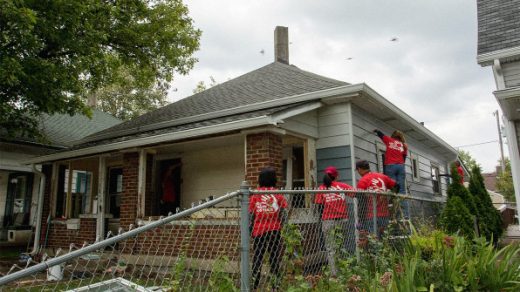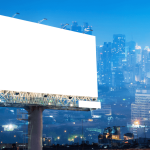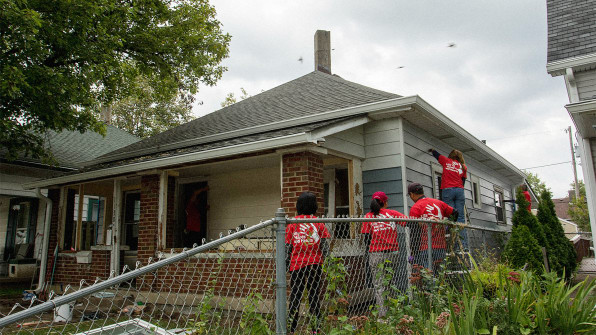This Neighborhood Is Transforming By Letting Artists Buy Its Vacant Homes For Cheap
For artists, the gentrification cycle in cities often goes something like this: struggling photographers or painters or writers move into an industrial neighborhood with cheaper rents and transform it. As new businesses spring up to serve these new residents, the neighborhood becomes more desirable to a wider swath of upper-middle class professionals. Eventually, rents increase so much that the artists have to move away.
In Indianapolis, one block in the Garfield Park neighborhood south of the city’s downtown is experimenting with a different model. An arts nonprofit worked with other partners to buy and renovate vacant houses and is now offering to co-own them with artists. Artists will pay half the cost–one $80,000 home, for example, will sell for around $40,000. If they later move out, they’ll get their equity back, but no more; the house will be sold at the same cost to someone else, keeping the neighborhood accessible as the artists help make it more desirable.
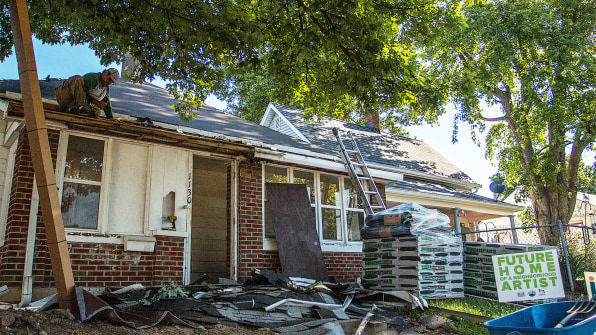
“Neither of the two sides can profit off of an inflated market value,” says Jim Walker, executive director of Big Car Collaborative, the art and placemaking nonprofit leading the project along with the local Riley Area Development Corporation and local neighborhood associations. “That’s to keep us from pricing out future owners of the homes.”
The nonprofit, along with several of its members, was based in a nearby neighborhood, called Fountain Square, for seven years until it was priced out as rents rose. “At that point, the ship had sailed and commercial and, later, residential gentrification was underway,” he says. “And we knew it was time for us to do something different.”
When Big Car bought an abandoned factory on a block in Garfield Park, converting it into a community art center that opened in 2016, the organization realized that there was a bigger opportunity in the area. The block, cut off from part of the neighborhood by a highway built in the late 1960s and early 1970s, had declined for years; roughly half of the houses were abandoned.
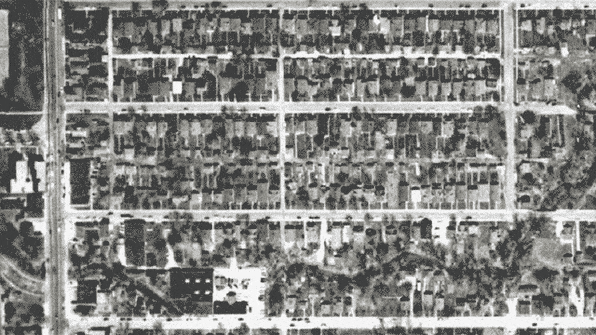
“The thought was, let’s have these houses be cultural locations that are also studio space and living space for artists,” says Walker.
Although housing in Indianapolis is cheap relative to some other parts of the country, wages are also low, and for someone working in a creative field, buying a house might not be attainable. The low land prices on this particular block made it possible for the partners to buy the houses, fix them up, and still offer them at a cost that artists can afford.
“These homes were available to us below $20,000, on average, because they were owned by banks in Florida and other investors who just walked away,” says Eric Strickland, executive director of Riley Area Development Corporation, which works on community development in and around downtown Indianapolis.
In addition to funds invested by the organizations that are involved, local developers and architects–along with neighbors–also donated labor. Some supplies were also donated. The resulting houses are both affordable and neutrally finished, so artists can customize the final space to their own taste.
The location has some advantages for artists. Anyone who buys a house in the program can use resources in the art center at the end of the block, such as a wood shop and screen printing shop. A separate building houses a sound art gallery and a community radio station. As more artists move into the homes, there will be a built-in community.
“There’s also a need, I think, for artists to be in a community and to be connected with each other,” says Walker. “This is a way for them to be in close proximity with others, and also have our building and the workshop that’s here and the facility as something they can use.”
There are more underused resources in the neighborhood’s nearby historic city park, such as an amphitheater, arts center, and library. “You have a lot of public space that can engage artists’ work,” says Strickland. “So now you have a place in the community for that work to be deployed.”
The team took inspiration from other communities that are using similar models to attract artists. Paducah, Kentucky launched its Artist Relocation Program in 2000, offering artists land or vacant buildings for $1; the program rebuilt the neighborhood. In Houston, Project Row Houses restored houses for visiting artists in a struggling African-American neighborhood. A Minnesota-based nonprofit called Artspace has developed dozens of live-work spaces for artists.
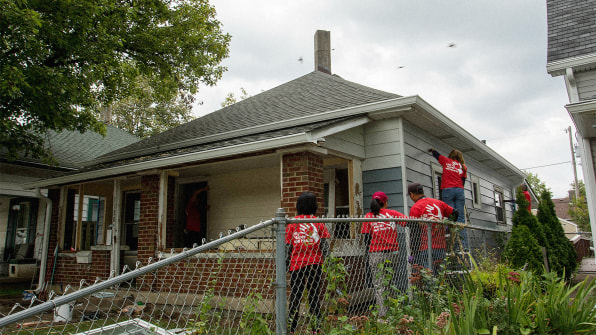
In Indianapolis, the Artist and Public Life Residency program is designed for artists who are particularly interested in community and placemaking. “What we’re really looking for, first and foremost, is leadership in trying to invest in the community, and use the talents and resources that you have to support your own neighborhood,” says Walker.
Artists–defined broadly as anyone working in a creative field, from filmmaking and architecture to culinary arts–will dedicate at least 16 hours a month to working with the public. For example, they may teach a workshop or work with neighbors to create public art for the neighborhood. They will also open their homes to the public between four and six times a year, typically during monthly gallery walks in the neighborhood.
The partners purchased 11 buildings; of the three that are now ready, two are available in a current round of applications. One will be reserved for short-term artist residencies. At least four more homes will be sold later. As the program develops and the team can evaluate its progress, some of the other homes may be rented rather than sold.
As the vacant homes are filled, that will help push up the value of neighboring homes. Because the neighborhood is adjacent to another recently revitalized area, and because a bus rapid transit line will soon improve transportation there, home values are likely to increase for other reasons as well.
While that will benefit existing homeowners, it could potentially push some renters out of the neighborhood. The development corporation wants to encourage other developers to build new affordable housing for the area to help keep the most vulnerable people in place. Residents in the area, on average, are poorer and more likely to be unemployed than those in the county as a whole (unlike gentrifying neighborhoods in some cities, however, race is not a major factor–most of the residents are white).
Big Car is working closely with neighbors, who they say have been supportive of the changes–particularly the potential for local commercial streets to gain new businesses and bringing life to vacant houses.
“Ultimately, we want to be a resource to residents, and we want to help existing neighbors stay in their homes and enjoy positives that come from turning vacant houses and industrial and commercial buildings into vibrant, community-focused cultural spaces and local businesses,” says Walker.
“We learned, from our first time around, that being able to do this takes planning, thinking ahead, and a very strong partnership between the people working on redevelopment and the people who live there,” he says. “Nobody wanted all of these houses and buildings to stay vacant. We want to make sure that the effect of what we and others are doing with these formerly vacant spaces is positive and supports our neighborhood–and results in a better place for lots of people, not just in profit for a few.”
(57)

